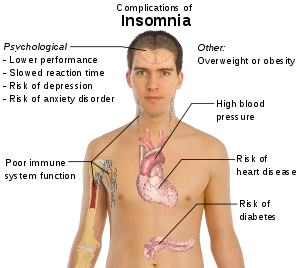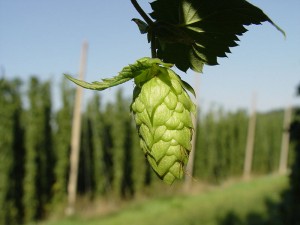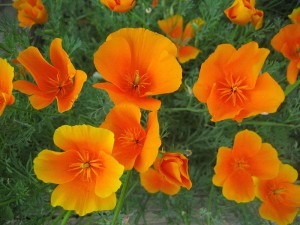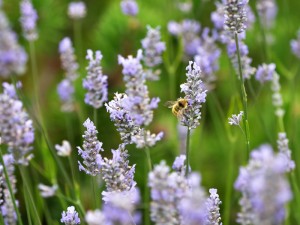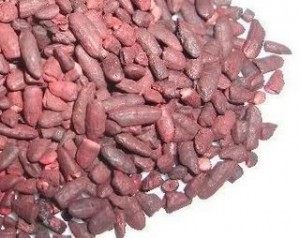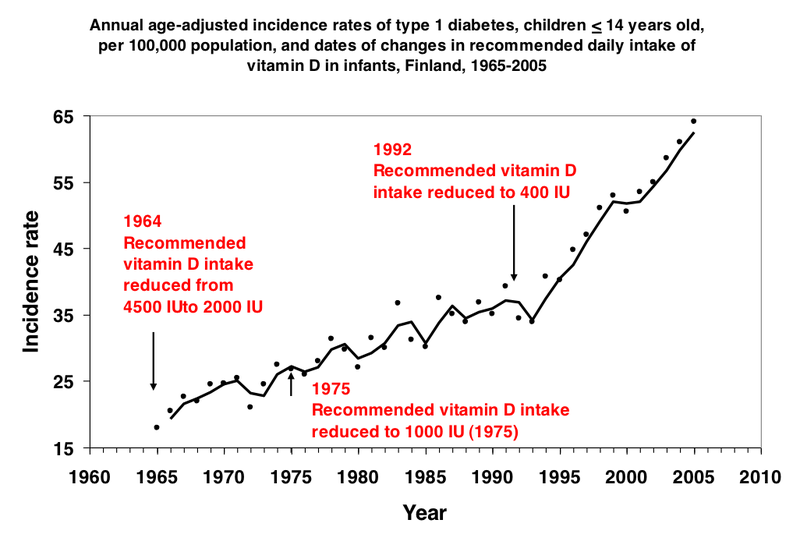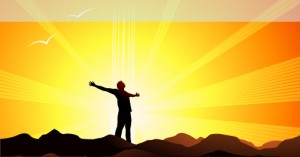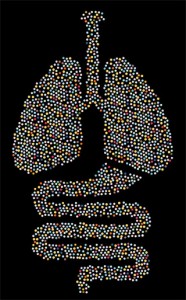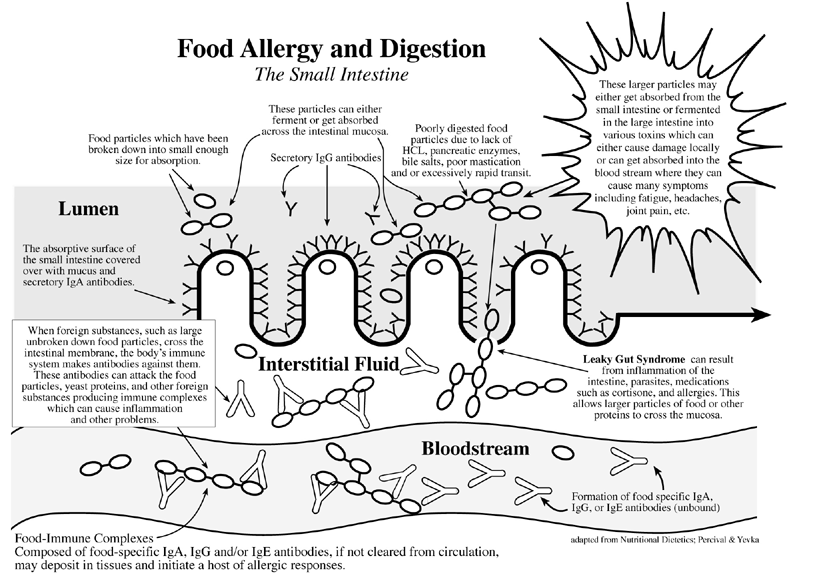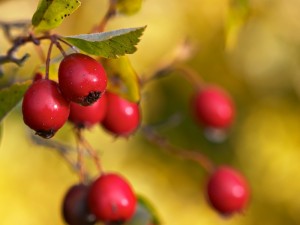 Hypertension is a silent disease which can be lethal. An estimated 60 million Americans suffer from the disease. It causes strokes, heart attacks,heart failure, kidney disease, arterial aneurysm and varicosities, headaches, vision problems and has many secondary effects.
Hypertension is a silent disease which can be lethal. An estimated 60 million Americans suffer from the disease. It causes strokes, heart attacks,heart failure, kidney disease, arterial aneurysm and varicosities, headaches, vision problems and has many secondary effects.
In 90-95% of high blood pressure, the American Heart Association says there is no one identifiable cause. This kind of high blood pressure is called primary hypertension or essential hypertension. It is usually a combination of factors, such as:
- Weight. This can affect both high and excessively low blood pressure but is not simple. The greater your body mass, the more pressure there is theoretically on your artery walls. That’s because more blood is produced to supply oxygen and nutrients to tissues in your body. However in many sedentary heavy people, there is insufficient blood pressure to perfuse tissues, leading to brain fog and fatigue. Still there are many obese people who have strong artery walls and normal blood pressure.
- Sleep. The average American in the 1920s slept 9 hours a night, and we have not evolved to need less. Lack of sleep raises cortisol, the stress hormone, which in turn raises blood pressure.
- Diet. Hypertension is associated exclusively with western diet and lifestyle; it is virtually unknown in undeveloped areas of the world following traditional diets
- Low Vitamin D levels. Serum 25 Hydroxy D3 levels should be around 50, but show some protection around 30.
- Low fiber diet. Fiber helps carry out fats through the intestines so they are not reabsorbed in the gut and thus keeps them out of circulation where they can block arteries, allowing pressure to build up.
- Activity level including weight training as well as aerobic activity. Lack of physical activity tends to increase heart rate, which forces your heart to work harder with each contraction. Interval training where aerobic and anaerobic activities such as weight training are interspersed is perhaps the best type of training to reduce hypertension.
- Tobacco use. Chemicals in cigarettes and tobacco can damage artery walls.
- Heavy metal toxicity reduces antioxidant availability and sets of free radicals which contribute to inflammation and hence cholesterol build up. Chelation can reduce heavy metals if properly done.
- Sodium and Potassium intake. Excessive sodium in the diet can result in fluid retention and high blood pressure, especially in people sensitive to sodium. Low potassium can result in elevated sodium in cells, because the two balance one another.
- Magnesium and Calcium Intake. Magnesium has dropped over a third in our soils since the mid 1970s as hypertension has risen. Magnesium also reduces hypertension in pregnancy. Calcium is less depleted but works in synergy with magnesium to reduce blood pressure.
- Stress. Stress is well known to raise blood pressure, either temporarily (labile or white coat hypertension) or more permanently. Stress induces the adrenal glands to produce cortisol.
- Alcohol consumption. Excessive alcohol intake can, over time, increase the risk of heart disease.
- Age. The risk of high blood pressure increases as we get older.
- Genetics. High blood pressure often runs in families and is more prominent in African Americans. This may be because melanin binds cadmium, lead and copper and heavy metals affect hypertension.
So what do we do? Weight loss, exercise, lower sodium to potassium ratios, and lower stress are all important. We can be tested for heavy metal toxicity and see if treatment is likely to be useful. But there are a number of herbs that are quite useful at rebalancing our bodies to lower blood pressure.
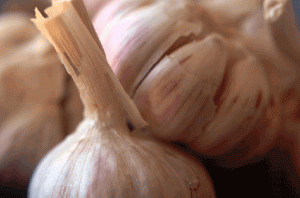 Garlic is well known to lower blood pressure, as well as blood sugar which may indirectly affect pressure by reducing inflammation and cholesterol deposit. (Cholesterol is the body’s bandage for inflamed tissue, but in excess can restrict the blood vessels.) Garlic increases antioxidant levels in the blood. A meta-analysis of garlic and hypertension studies found that it was superior to placebo in the treatment of hypertension.
Garlic is well known to lower blood pressure, as well as blood sugar which may indirectly affect pressure by reducing inflammation and cholesterol deposit. (Cholesterol is the body’s bandage for inflamed tissue, but in excess can restrict the blood vessels.) Garlic increases antioxidant levels in the blood. A meta-analysis of garlic and hypertension studies found that it was superior to placebo in the treatment of hypertension.
The volatile oils that are found in fresh garlic are likely important for cardiovascular effects, although dry preparations do have some cardiac effect. My favorite way to take garlic is to mince a clove finely while holding it in place, coat it with honey on a spoon, and to place the spoon upside down in the mouth (which for some reason helps you swallow it) followed by a chaser of water or juice. Take with parsley to kill the odor.
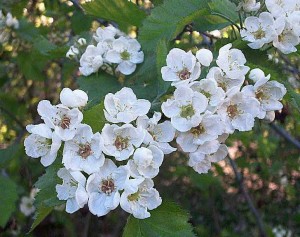 Hawthorn berries and flowers help nourish the heart which is a category of treatment that no western cardiac medicine fulfills. Hawthorn is a trophorestorative to the heart, which means it tonifies the heart through deep nutrition that rebuilds the organ. Hawthorn can be used for functional or structural problems with the heart and there is a great deal of research to back up traditional uses.
Hawthorn berries and flowers help nourish the heart which is a category of treatment that no western cardiac medicine fulfills. Hawthorn is a trophorestorative to the heart, which means it tonifies the heart through deep nutrition that rebuilds the organ. Hawthorn can be used for functional or structural problems with the heart and there is a great deal of research to back up traditional uses.
According to David Winston, hawthorn can be used for myocarditis, arrhythmias, palpitations, angina, other ischemic heart diseases, recovery from heart attacks, for congestive heart failure (Pittler, et al, 2008) when combined with Lily of the Valley, Selinocereus grandiflorus (one of the night blooming cereus cactuses- check the Latin name), for mitral valve prolapse with Night blooming cereus and Collinsonia, and with atrial fibrillation when combined with Scotch Broom and Night blooming cereus. Regular use helps prevent arteriosclerosis and peripheral insufficiencies and lowers blood pressure (Asgary, et al, 1998) as well as triglycerides and LDL and VLDL cholesterol levels. It is also useful for grief-related heart/shen issues when combined with rose petals and mimosa bark.
Not all hawthorns are the same. Chinese hawthorn, Cratageus pinnatifida is used for food stagnation, and may have some effect on the heart but is generally inferior to European hawthorn, C. monogyna in terms of cardiac effect. There are American hawthorns that are very good, while others are fairly inert, according to Winston.
Linden flower or Tilia is a mild hyptoensive herb, a nervine and an herb that loosens the pectoral area. The European linden flower is most effective. It is also good for headaches caused by “white coat” or labile hypertension.
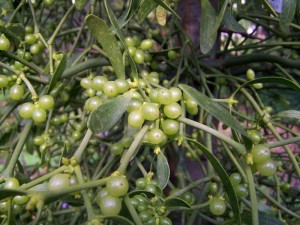 European mistletoe, Viscum album can be used to treat mild hypertension with a red face, vascular headaches, fatigue, dizziness and irritability. Do NOT use American mistletoe which is highly erratic in its effects and can be dangerous. In fact this herb should be handled by an experienced practitioner. Mistletoe first elevates blood pressure then lowers it. For vascular headaches due to hypertension, it can be mixed withFeverfew, Corydalis and Peony root. For hypertension William Miller uses it with Rauwolfia and Linden. Mistletoe is a low dose herb.
European mistletoe, Viscum album can be used to treat mild hypertension with a red face, vascular headaches, fatigue, dizziness and irritability. Do NOT use American mistletoe which is highly erratic in its effects and can be dangerous. In fact this herb should be handled by an experienced practitioner. Mistletoe first elevates blood pressure then lowers it. For vascular headaches due to hypertension, it can be mixed withFeverfew, Corydalis and Peony root. For hypertension William Miller uses it with Rauwolfia and Linden. Mistletoe is a low dose herb.
 The real Night blooming cereus, Selinicereus grandifolia, is an epiphyte with narrow cactus-like leaves that blossoms rarely, in the evenings. It is used for angina, a heartbeat with a feeble irregular presentation and the person usually has anxiety and depression. There are a lot of substituted species around which don’t do the same thing, so I usually use Herbalist and Alchemist or Herb Pharm Cactus Grandiflorus Extract
The real Night blooming cereus, Selinicereus grandifolia, is an epiphyte with narrow cactus-like leaves that blossoms rarely, in the evenings. It is used for angina, a heartbeat with a feeble irregular presentation and the person usually has anxiety and depression. There are a lot of substituted species around which don’t do the same thing, so I usually use Herbalist and Alchemist or Herb Pharm Cactus Grandiflorus Extract“>HerbPharm which use the real thing. It combines well with hawthorn. Winston suggest it for mild to moderate congestive heart failure, precordial oppression, mitral valve prolapse as above, decompensation of the heart caused by nicotine toxicity and Klinefelter’s syndrome (athlete’s heart.) For hypertension I use it with Collinsonia and Hawthorn.
Collinsonia is used to strengthen blood vessels, so is useful when someone has hypertension, although it does not itself lower the blood pressure. Still it should be added to prevent blood vessel failure. It combines well with horsechestnut.
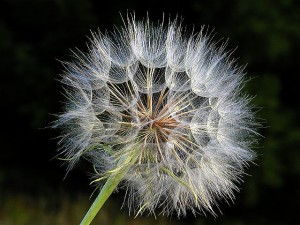 Dandelion leaf is a potasium-sparing diuretic useful for edema and can be used in lieu of Lasix or other diuretics for hypertension or mild congestive heart failure. The whole herb is used in Chinese medicine to reduce Liver heat or Liver yang rising, which is a source of hypertension. Dandelion leaf is also anti-inflammatory and anti-infective.
Dandelion leaf is a potasium-sparing diuretic useful for edema and can be used in lieu of Lasix or other diuretics for hypertension or mild congestive heart failure. The whole herb is used in Chinese medicine to reduce Liver heat or Liver yang rising, which is a source of hypertension. Dandelion leaf is also anti-inflammatory and anti-infective.
Cayenne is a blood mover, which helps explain why it can help reduce blood pressure. It is diaphoretic, which helps remove some of the extra fluid by increasing sweat, depressurizing the system, is anti-inflammatory (a cox 2 inhibitor), increases circulation, is antioxidant and enhances the vascular integrity of the blood vessels.
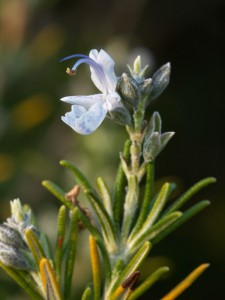 Rosemary is anti-inflammatory, diuretic, moves blood and is a nervine. As such it can reduce blood pressure mildly. It is a vasodilator, and is also useful for vasoconstrictive headaches. Its flavanoid diosmin is more helpful than rutin in protecting capillary integrity. It has a somewhat regulating effect on circulation and can be used for either hypertension or hypotension when properly combined with other herbs in formula.
Rosemary is anti-inflammatory, diuretic, moves blood and is a nervine. As such it can reduce blood pressure mildly. It is a vasodilator, and is also useful for vasoconstrictive headaches. Its flavanoid diosmin is more helpful than rutin in protecting capillary integrity. It has a somewhat regulating effect on circulation and can be used for either hypertension or hypotension when properly combined with other herbs in formula.
Arjuna is an Ayurvedic cardiovascular herb that has shown some mild effect on hypertension, as well as reversing impaired endothelial function in smokers. It is more often used for mild congestive heart failure, stable angina and palpitations. It also lowers LDL and triglycerides which can block blood vessels and raises HDL.
Dan shen is a peripheral vasodilator and hypotensive herb, so can help lower blood pressure. This root of Salvia miltorrhiza is a premier cardiovascular herb which is used for angina pain, hypertension, palpitations, irritability and to lower cholesterol and triglyceride levels.
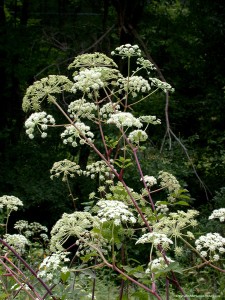 Both Chinese Angelica (Dang gui, Dong quai) and Angelica archangelica can be used for hypertension. They move stagnant blood so can prevent thrombosis when blood is under pressure. They also help build the quality of blood. Dang gui is stereotyped as a woman’s tonic because it helps the blood in menstruation, but is a premier cardiovascular herb.
Both Chinese Angelica (Dang gui, Dong quai) and Angelica archangelica can be used for hypertension. They move stagnant blood so can prevent thrombosis when blood is under pressure. They also help build the quality of blood. Dang gui is stereotyped as a woman’s tonic because it helps the blood in menstruation, but is a premier cardiovascular herb.
There are other herbs like foxglove and lily of the valley that have been used for cardiac conditions, but I would not be comfortable using them unless assayed as they were in the late 19th and early 20th century.
However adaptogens, like ginseng, reishi, ashwaganda, holy basil, astragalus and raphonticum are useful to reregulate the HPA axis and get the blood pressure back to normal, especially when in formula with blood pressure lowering herbs. Similarly anti-inflammatory herbs like turmeric and ginger can help reduce the heat and I use the proper individual herb in formula or New Chapter Zyflamend which contains both adaptogenic and anti-inflammatory herbs.
Diuretics like Fu Ling (poria), Ze Xie (alismatis), Bai zhu (atractylodes) or Zhu Ling (polyporus) make up formulas like Wu Ling San, or Zhu Ling San, formulas used in Chinese medicine used to drain dampness or damp heat. This can be quite useful in lowering blood pressure, provided that potassium is replenished and other parts of the disease are addressed.
Magnesium, selenium, coenzyme Q10, folic acid, fish oil supplying a gram of DHA daily and nattokinase are also helpful, but are fodder for an article on supplements and hypertension rather than herbs. Still hypertension is best addressed with lifestyle changes, rebalancing the diet and sensible weight loss as the core of treatment, with herbs and supplements being used to supply missing nutrients and to nudge the organ systems of the body towards a state of health.
Sources:
Asgary, S., Naderi, G., et al, Anti-Hypertension Effect of Iranian Crataegus curvisepala Lind: A Randomized Double-Blind Study, Isfahan Cardiovascular Research Center, 1998
Bharani, A., Ahirwar, L.K., et al, Terminalia arjuna Reverses Endothelial Function in Chronic Smokers, Indian Heart J,2004, Mar-Apr; 56(2): 123-8
Bharani, A., Ganguli, A. et al, Efficacy of Terminalia arjuna in Chronic Stable Angina: A Double-Blind, Placebo-Controlled, Crossover Study Comparing Terminalia arjuna with Isosorbide Mononitrate, Indian Heart Journal, 54(2):170-5, 2002
Mar-Apr.
Bergner, Paul. Cardiovascular Herbs. http://medherb.com/Therapeutics/Cardiovascular_Herbs_and_hypertension.htm
Pittler, M.H., Guo, R., et al, Hawthorn Extract for Treating Chronic Heart Failure, The Cochrane Library, 2008, Issue 1
Tankanow, R., Tamer, H.R., et al, Interaction Study Between Digoxin and A Preparation of Hawthorn (Crataegus oxyacantha), J Clin Pharmacol, 2003 Jun;43(6):637-43
Upton, R. [Ed.], American Herbal Pharmacopoeia and Therapeutic Compendium, Hawthorn Berry, Santa Cruz, CA, 1999
Upton, R. [Ed.], American Herbal Pharmacopoeia and Therapeutic Compendium, Hawthorn Leaf With Flower, Santa Cruz, CA, 1999
Winston, David. Materia Medica, unpublished ms. 2009
Winston, David and Merilly A Kuhn. Herbal Therapy and Supplements, A Scientific and Traditional Approach. Lippincott, 2007
http://altmedicine.about.com/cs/herbsvitaminsek/a/Hypertension.htm
Weiss, R., Herbal Medicine-Classic edition, 2001, Thieme, NY, pp. 158-160, 324-325
Witham MD, Nadir MA, Struthers AD Effect of vitamin D on blood pressure’ a systematic review and meta-analysis. J Hypertens. 2009 Jul 7.


